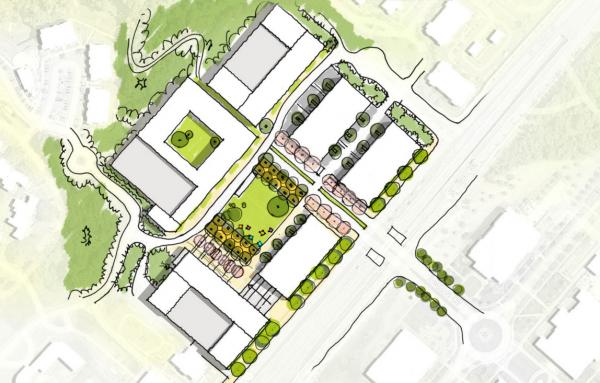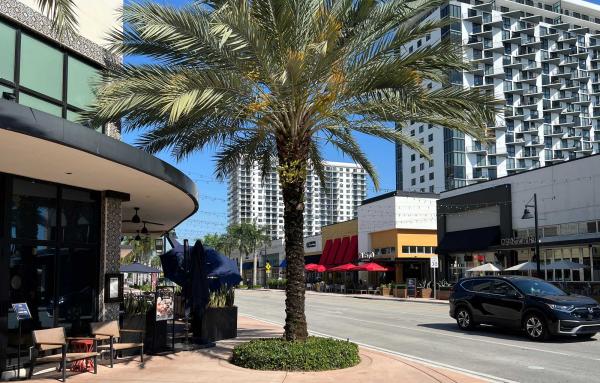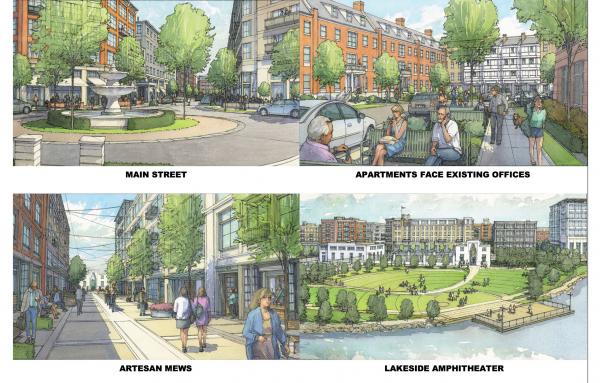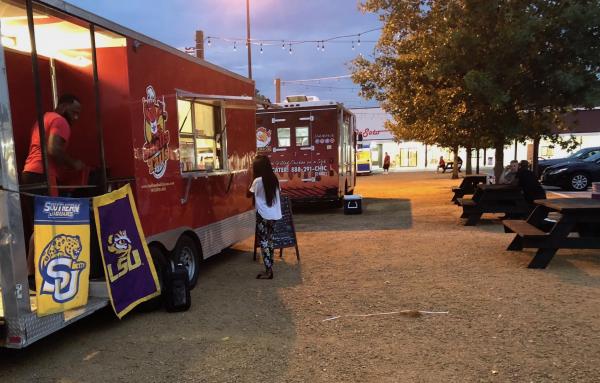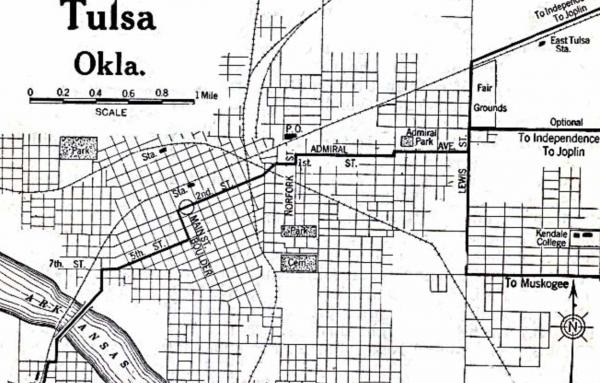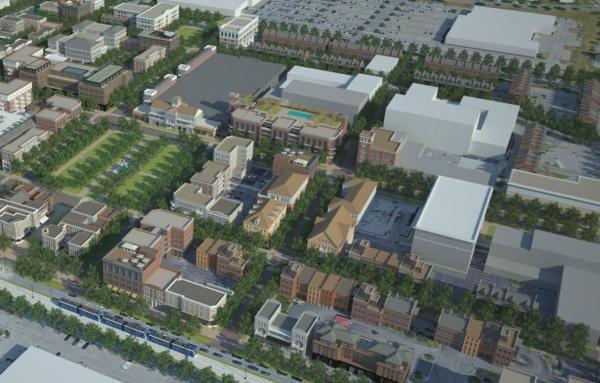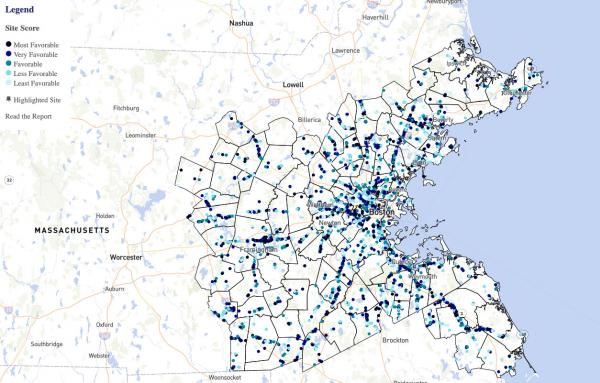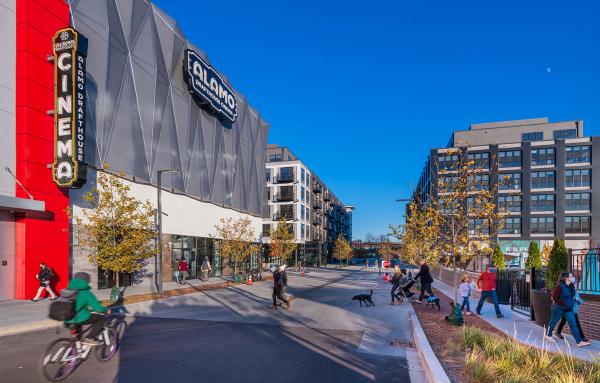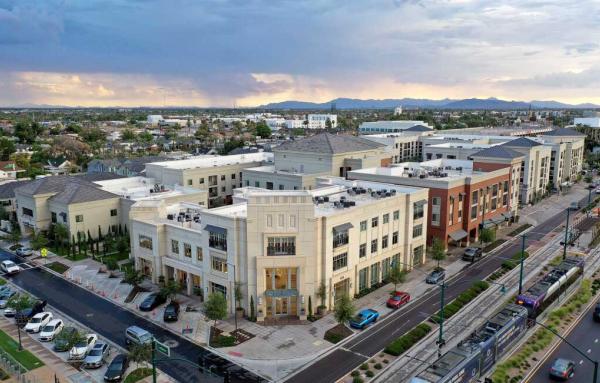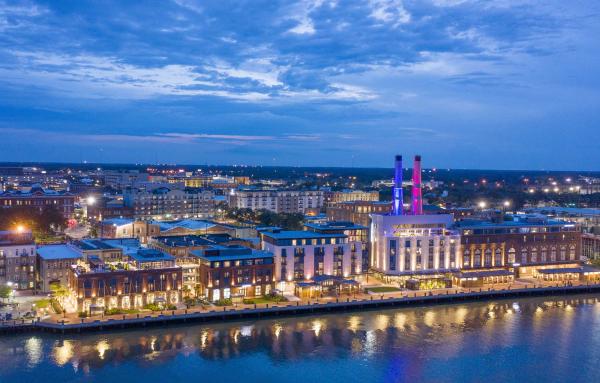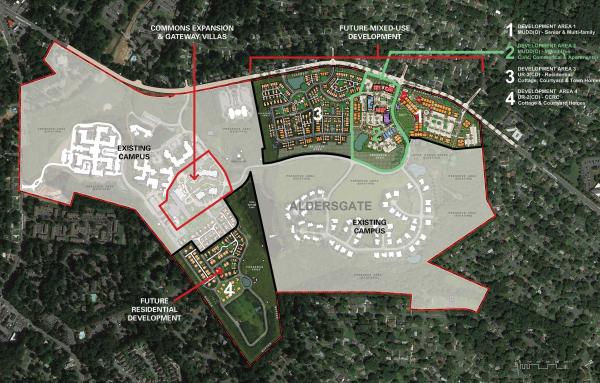Retrofit
CNU and affiliated designers visited a sprawling part of Charlotte to plan the transition of a 16-acre shopping center into a mixed-use center, with connections to a major university—UNCC. Temporary public space drives suburban retrofit.
Cities and states offer incentives for developers to convert offices to living spaces, which could have a profound impact on downtowns, employment districts, and office parks.
The rethinking of a conventional office park, Carmel Gateway is the latest big idea to be proposed in Carmel, Indiana, the city of roundabouts.
Conventional suburbs are cities that have grown obese. We need processes for reusing their worn-out parts and creating something of higher value.
The US may see 100,000 churches close, and this issue could help determine the success or failure of many downtowns and neighborhoods over the next three to four decades. The skills of urbanists are needed.
New urbanists need to recharge their commitment to a "micro-heroic" remapping of mid-century America—where immigrants, workers, and minorities now struggle to build sustainable communities.
Amherst, New York, is a municipality to watch for those who are tracking suburban retrofit—the idea of re-purposing automobile-oriented suburban areas for new uses in the 21st Century. Amherst is the largest suburb in the Buffalo region, and home to...
Redeveloping the most favorable 10 percent of suburban strip malls in the Boston region would meet a major portion of the area’s housing needs in the next decade, according to a study.
A strip plaza, never a part of the walkable fabric, is redeveloped to be a well-connected neighborhood commercial and social center.
Code reform and light rail, plus a key development, are helping to transform the center of Mesa, Arizona.
Even a small waterfront site can turn into a social and economic draw for a city or town.
Continuing care retirement communities are a huge industry, planned in the suburban model, often with excess land that could be better utilized in a walkable, mixed-use form.
